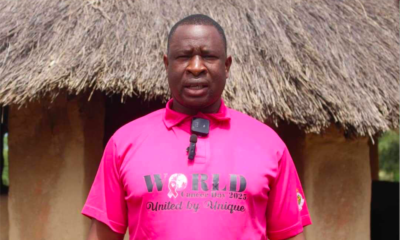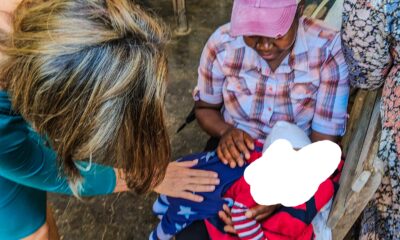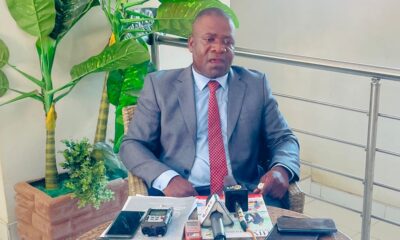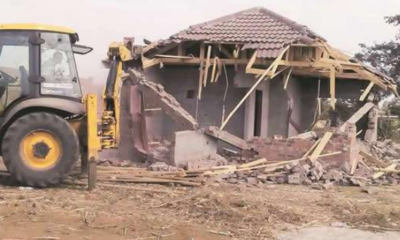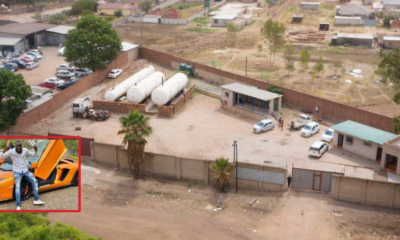NATHAN GUMA
HEALTH minister Douglas Mombeshora says government construct over 6 000 clinics by 2030, after it has emerged that people in some rural areas are walking over 15 kilometers to health centers.
This contradicts the World Health Organization’s (WHO) recommended distance of five kilometers to the nearest health facility.
Mombeshora’s comments come after an open-source investigation by The NewsHawks, with support from the Voluntary Media Council of Zimbabwe (VMCZ) and ActionAid Zimbabwe, which showed that may people in Mutoko were walking more than 15 kilometers to access health facilities.
For example, health workers and people from Chirindi village walk about 16 kilometres to access Chindenge Clinic.
Community-based organizations say the long distance is likely to slow progress in ending HIV transmission.
The minister however saif government was working to address the anomaly.
“We are in the process of building 6 000 hospitals by 2030 to cover the shortage. It is work in progress and likely to take more time depending on funding. So, we have mapped the whole country, and we now know where we are supposed to build these in order to mitigate this issue,” he told The NewsHawks.
“As government, we have been working with several health workers and social workers that have been helping direct people to hospitals to get treatment in a bid to end new infections.”
People from Chikukwa village in Mutoko are also travelling more than 15km to access Makosa Clinic.
Makosa Clinic is located in a mining area which is an HIV and sexually transmitted infections (STIs) hotspot.
Some clinics in the district do not have HIV self-testing kits and medication, forcing villagers to walk long distances to institutions clinics with supplies.
Community-based organisation Mhuriimwe AIDS Challenging Trust (Mact) says while more clinics are needed, it is important to equip rural health workers so that they can be mobile in rural areas thereby ensuring that health services are brought nearer to people.
MACT has been training volunteer caregivers to follow up HIV/AIDS treatment defaulters while also disseminating HIV education.
The volunteers are walking long distances to access residential areas.
In other instances, they have also been using their own resources to share with communities where they operate in.
“If the village workers can be able to have bicycles for instance, it would be easier for them to move around and efficiently identify and refer new cases to hospitals for treatment. This will also help stem out new HIV and AIDS cases,” said Tichatonga Nyangu, Mact director.
While the government says it will build more health centres in the rural areas by 2030, civil society organization, Southern Africa AIDS Dissemination Service insists there is need for sustainable health financing through the national budget.
“Issues of distance to the nearest health facility is a major barrier in terms of access to the healthcare services, especially in the rural areas; the settlement areas. We have a situation where patients walk more than 10 kilometers to access healthcare services, and this distance on its own can also be a major deterrent factor in terms of access and safety,” said Llyod Dembure, SafAIDS head of resilience, diversity and sustainability.
“And we find that in some settings there is also issues of lack of transport to that facility. So, it is really a challenge that we hope the government can establish satellite clinics as a cushioning measure to ensure there are health facilities within the five-kilometer radius.
“The satellite clinics will ramp access to basic health care facilities, and if there are complications, patients can then be referred to major referral facilities.”
In addition, Dembure said there was a need for youth care centers within five-kilometer radiuses, to cater for young people, given the observation that youths are unlikely to seek sexual reproductive health services if distances are long.
A baseline survey by the Disaster and Environmental Trust (DEMT) found that other than the long distances, some people in Mutoko have been paying up to US$120 to obtain medicine from hospitals that are far away, such as All Souls Mission.
Other respondents in the survey reported paying between US$1 and US$6 access sexual reproductive health services at health institutions.
The survey says the cost is beyond the reach of many.
Several people, who took part in the survey, expressed uncertainty or a lack of knowledge about the availability and quality of pre-exposure prophylaxis (PrEP) and post-exposure prophylaxis (PEP) at their local health centers.
PrEP, taken before possible HIV exposure, and PEP, taken after exposure to HIV, help people stay HIV negative, even if their partners may have HIV.
“This indicates limited access to sexual reproductive health services. It also highlights the vulnerability of young women and girls who travel long distances to access specialised sexual reproductive health services at health centers. Therefore, it confirms how a significant number of young people obtain these services at home, from parents, friends, and relatives,” the survey says.






